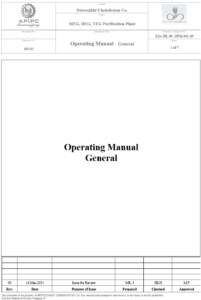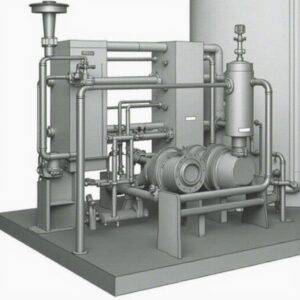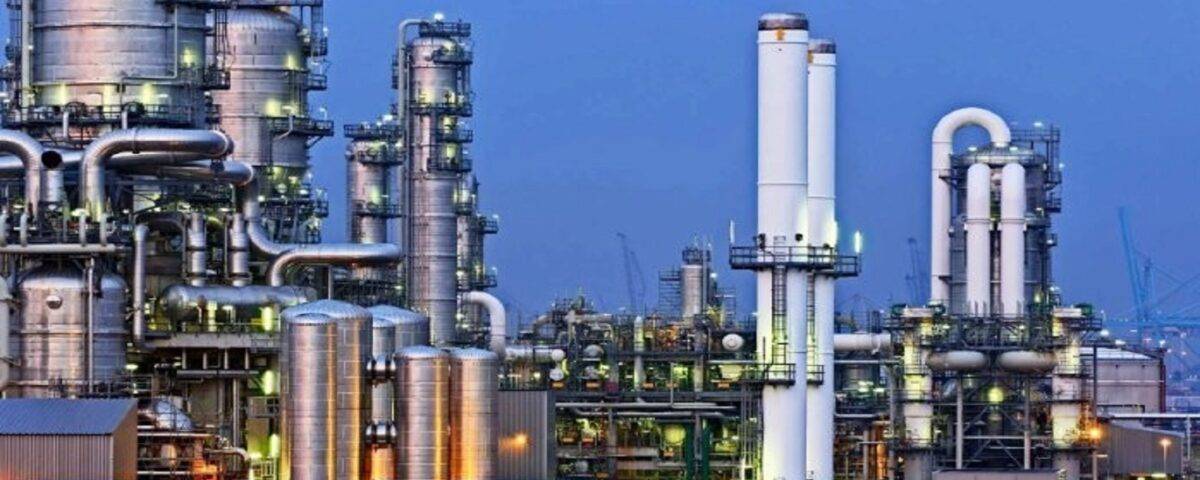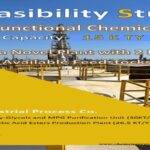Introduction
This study is particularly beneficial and practical for engineers and technical managers responsible for the commissioning and operation of industrial units. The initial section of this document provides an overview of the startup phases, including all preliminary processes and prerequisites that must be executed before commencing operations. Understanding and adhering to the necessary conditions for starting operations is often essential to prevent potential problems in later stages.
This project elaborates on issues related to the circulation of feed, checking pH and gas chromatography (GC), as well as the injection of acid into the feed tank. Subsequent stages involve necessary adjustments for the effective operation of various unit equipment, including leveling of towers and pressure adjustment of ejectors. Another section of the document details precise instructions for introducing steam into the unit. These instructions encompass not only the technical steps of the process but also key points for ensuring proper system functionality. Specifically, the drainage of condensates and ensuring the proper function of control valves are fundamental steps. Throughout this process, monitoring pressure and temperature is also presented as a critical component to prevent system errors.

Additionally, the necessary conditions for the condensate vessel are explained, providing guidelines for settings and safety considerations. This section addresses pressure regulation within the vessel and preventing undesirable phenomena such as water hammer, emphasizing the importance of ensuring the output of pure liquid. Finally, the use of boiler feed water (BFW) is examined as a key element in regulating the temperature and pressure of the incoming steam. This part discusses the pressure conditions of feed water relative to the incoming steam and how this affects the overall system performance.
Startup
This section outlines the fundamental and essential stages required to commence the operations of an industrial unit. These stages generally encompass processes whose successful execution is vital for ensuring optimal system functionality and minimizing potential risks. Initially, circulation of the feed is introduced as a key activity that includes assessing and adjusting the flow of feed to the main equipment. This step ensures the uniform and correct distribution of raw materials. Additionally, examining parameters such as pH and utilizing gas chromatography (GC) aids in the accuracy and quality of the feed, ultimately impacting the final product quality.
The next event in this process is the injection of acid into the feed tank, which is regarded as a critical step in preparing the initial chemical compounds. This step must be executed carefully and according to specified protocols to prevent undesirable reactions. Alongside these stages, leveling the towers to ensure liquid level control and pressure adjustments of ejectors are also of particular importance. These activities not only create an efficient working environment within the industrial unit but also provide a clear picture of the necessary conditions for starting operations. Overall, a deep understanding and precise adherence to these initial steps empower all specialists and engineers to confidently conduct the commissioning, thereby achieving maximum productivity and safety for the industrial unit.
Key Differences between P-1002A/B and P-6002A/B Pumps
Pumps P-1002A/B and P-6002A/B are both utilized in industrial processes, yet there are significant differences between them that pertain to each one’s functionality and specific applications.
– Pump P-1002A/B: This pump operates as a circulating pump designed for transferring liquids within the system. It is typically used in the initial phases of the process to ensure uniform distribution of contents throughout the system. The operational pressure of this pump varies between 100 to 200 mbar and is used for the circulation of feed.
– Pump P-6002A/B: This pump functions as a vacuum pump, tasked with creating a vacuum in the system. It is generally utilized in the later phases of the process to reduce pressure and provide suitable conditions for the separation of materials. The operational pressure of this pump is usually less than 10 mbar and is employed to create a vacuum in Towers 1001 and 1002.
These differences illustrate the distinct roles of these two pumps in industrial processes, with the appropriate selection depending on the specific needs of each operational stage.
Operation of P-6002A/B Vacuum Pumps
The P-6002A/B pumps act as vacuum pumps in industrial systems to create a vacuum in Towers 1001 and 1002. Below are the steps and operation procedure of these pumps for vacuum generation:
1. Initial Setup:
– Prior to utilizing the vacuum pumps, ensure that the system’s initial conditions are prepared, including circulating the feed and setting the liquid levels in the towers.
2. Pressure Adjustment:
– The pressure in Towers 1001 and 1002 should be adjusted between 100 to 200 mbar. For this, a needle valve in the pump’s suction line is used to regulate the input pressure to the pump.
3. Vacuum Pump Operation:
– Once the feed is ready and pressures are set, the P-6002A/B pump is activated. These pumps are turned on to create a vacuum in the towers, facilitating material separation.
4. Vacuum Creation:
– When the pump starts operating, a vacuum is established in the system. This vacuum decreases the pressure in Towers 1001 and 1002, aiding in effective separation of water and other materials.
5. Pressure Monitoring:
– During operations, the ejector pressures must remain below 10 mbar. Should the pressure exceed this value, existing issues need to be identified and resolved.
6. Operation Conclusion:
– After achieving the required vacuum and separating water, feed to the unit resumes. This process includes sampling products and assessing their purity.
The P-6002A/B vacuum pumps play a key role in the material separation process. These pumps are specially designed for pressure control and facilitate separation operations, making their correct functionality crucial for achieving desirable results.
Methods for Adjusting Ejector Inlet Pressure
Several methods are available for adjusting the inlet pressure of ejectors in industrial systems, contributing to optimized performance and preventing issues related to improper pressure. Below are the discussed methods:
1. Using Needle Valve:
– One of the primary methods for adjusting the inlet pressure of ejectors involves using a needle valve installed in the pump’s suction line. This valve allows operators to accurately control the inlet pressure, helping maintain it within the desired range (100 to 200 mbar).
2. Adjusting the Height of Condensate Vessel:
– The height of the condensate vessel should be set lower than the suction height of the vacuum pump. This adjustment aids in preventing issues caused by excessive pressure and facilitates condensate flow.
3. Controlling Steam Inlet Temperature and Pressure:
– To ensure that the inlet pressure of ejectors is usually 1 bar less than the inlet steam pressure (around 16 to 17 bar), the temperature and pressure of the incoming steam must be closely monitored. This guarantees effective ejector operations.
4. Leak Monitoring:
– Ensuring that no leaks exist in the system is critically important, as leaks can lead to sudden pressure increases. Therefore, leaks should be identified and rectified before the initiation of operations to maintain the ejector pressures within an appropriate range.
5. Utilizing Automatic Control Systems:
– Some systems are equipped with automatic controls, continuously monitoring the pressure while making necessary adjustments as needed. These systems can include pressure sensors and automatic control valves, which assist in maintaining optimal operating conditions.
The proper adjustment of ejector inlet pressures using methods such as needle valves, temperature control, and leak monitoring is essential for the effective operation of industrial systems. These measures help mitigate pressure-related issues and enhance the efficiency of processes.
Steam Introduction Instructions
This section outlines the most precise steps and necessary considerations for transferring steam into an industrial unit, which is crucial in production operations. The guideline begins with the necessity of condensate drainage; this step is vital for preventing the accumulation of excess liquid and obtaining pure steam, as it is always essential to ensure that the system operates under optimal pressure without obstructions. Following this, verifying and ensuring the functionality of control valves is introduced as the subsequent step. Control valves assist in regulating and maintaining pressure and steam flow in the system; hence, their correct operation is mandatory for achieving favorable operational conditions.
Adjusting the inlet steam pressure is also presented as a key stage in this process. This pressure must be carefully managed to prevent pressure fluctuations and energy losses, as excessive pressure can lead to equipment damage and process disruptions. Furthermore, this section emphasizes the importance of continuous monitoring of pressure and temperature throughout the steam transfer process. Such monitoring allows operators to quickly detect any unexpected changes in system conditions and respond accordingly to avert unwanted incidents and performance issues. Ultimately, by diligently following these instructions, maximum efficiency and safety in the steam injection process can be achieved, thereby enhancing the overall structure of industrial operations.
Condensate Vessel Conditions
This section elaborates on the requirements and necessary conditions for the proper functioning of the condensate vessel, which is a key component in steam systems and industrial processes. The first and foremost consideration is the accurate setting of the condensate vessel pressure. This pressure must be precisely managed, as improper pressures can lead to phenomena like water hammer, which results from water impact due to condensate buildup in the system. Water hammer can inflict significant mechanical damage to equipment, thereby increasing maintenance and repair costs.
To prevent such issues, it is crucial that the vessel pressure is monitored and adjusted accurately. Specifically, operators should ensure that the vessel pressure remains within the permitted range and promptly act to adjust it in case of unforeseen fluctuations to avert hazards arising from water hammer phenomena.

In addition to pressure regulation, ensuring the output of pure liquid is another critical condition. A pure liquid output implies that no contaminants or unauthorized materials will enter subsequent tanks or processes. To achieve this goal, operators should regularly monitor the quality and purity of the output liquid and identify any disturbances for timely rectification. These actions not only enhance the quality of the final product but also increase system efficiency and reduce production costs.
Overall, by diligently observing the conditions and requirements related to the condensate vessel, one can ensure effective performance of the steam system and prevent issues that could lead to unwanted interruptions and significant financial losses. Thus, effective management of the condensate vessel can play a pivotal role in optimizing industrial operations and conserving resources.
Use of Boiler Feed Water (BFW)
This study investigates the significance and methods of utilizing boiler feed water (BFW) in regulating the temperature of incoming steam, which notably impacts the efficiency and operation of steam systems. BFW serves as the primary source for supplying steam, playing a critical role in controlling the temperature and pressure of the system, thus requiring careful utilization. This section examines how to synchronize BFW with the rest of the system and how to adjust temperatures to optimize steam performance.
In its most organic form, the BFW should be introduced to the system at a specific temperature to align with the incoming steam, as inappropriate temperatures may lead to pressure fluctuations and reduced steam efficiency. Consistent monitoring of the BFW temperature is essential, and necessary adjustments should be made as needed. This meticulous observation enables operators to maintain ideal conditions and avoid complications such as excess or insufficient steam generation.
Moreover, the pressure conditions of the BFW are also rigorously evaluated. The BFW pressure should be set to effectively align with the pressure of the incoming steam. If BFW pressure is lower than steam pressure, unwanted clashes and energy waste may arise, negatively impacting the entire production process. Conversely, excessive pressure may pose risks to equipment and damage the system. Therefore, consistently monitoring and adjusting the BFW pressure in relation to the incoming steam is critically important, thus utilizing advanced measurement and control tools is recommended. Ultimately, this entire process aids in optimizing system performance and enhancing the quality of produced steam, ultimately contributing to reduced production costs and increased customer satisfaction in the long term. Therefore, establishing an efficient and reliable system that continuously adjusts BFW temperature and pressure is key to success in any industrial and boiler unit.
Conclusion
In conclusion, processes related to the initiation and use of steam and boiler feed water in industrial units are identified as vital factors in optimizing performance and increasing production efficiency. By adhering to precise guidelines for steam and BFW management, including attention to proper pressure and temperature settings, significant improvements in the quality of final products and reductions in operational costs can be achieved. Continuous monitoring of conditions such as condensate vessel performance and precision in BFW supply processes not only ensures system safety but also minimizes the risk of fluctuations and unintended incidents. Ultimately, meticulous and effective actions in managing these processes facilitate the achievement of production goals and enhance customer satisfaction, leading to a successful and sustainable experience for any industrial unit.
To enhance performance and productivity in the design, establishment, production of technical knowledge, innovative engineering, and optimization of glycol production and purification units in Saudi Arabia, Chemengproj Company has undertaken comprehensive simulation and optimization studies on the key processes of this unit. These studies include the following:
1. Feasibility study of the separation and purification unit of glycols with a capacity of 15 KTY.
2. Production of basic engineering documents; Operation Manual for the glycol unit.
3. Performance analysis of production and resource management at the Arta Chemical plant: evaluation of performance reports, human resources, and raw materials.
4. Establishment plan and technical knowledge for producing MEG, DEG, and TEG with a capacity of 15 KTY.
5. Design of documents, technical knowledge, and drawings for BFD, PFD, PID, and UFD of the glycol purification unit.
6. Management, control, and endorsement of engineering documents for the production unit of MEG, DEG, and TEG.
7. Simulation and optimization of the Monoethylene Glycol (MEG) purification process with a production capacity of 10,000 KTY.
8. Simulation and optimization of the Monoethylene Glycol (MEG) purification process with a production capacity of 15,000 KTY.
These initiatives aim to enhance the production of technical knowledge and innovative engineering, reduce production costs, optimize glycol production processes, and design modern units. The ultimate goal is to ensure better product quality and increase the company’s competitiveness in the market.
Production of Engineering Documents; Operation Manual for the Ethylene Glycol Unit
In this project, the production of basic engineering documentation; the Operation Manual for the ethylene glycol unit has been completed.


